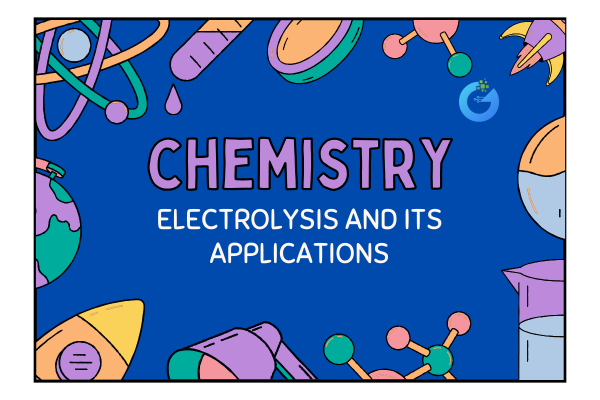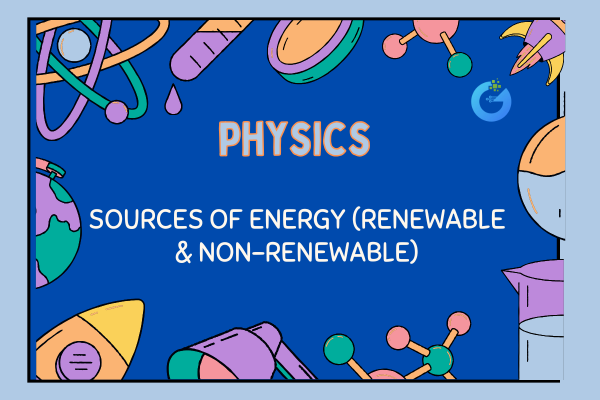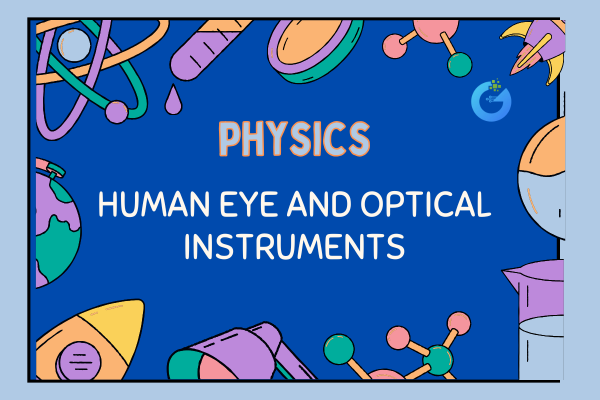Introduction
Imagine if we could break down water into pure hydrogen and oxygen using just electricity. Or take a dull metal spoon and coat it with shiny silver without dipping it in molten metal.
This is exactly what electrolysis allows us to do. It’s a process where electricity is used to break down compounds—and it’s far more common in your everyday life than you might think.
In this chapter of Class 10 Chemistry, we’ll explore what electrolysis is, how it works, and how it’s used in real-world applications like metal extraction, purification, and electroplating.
Let’s begin with the basics.
expert-led Chemistry classes – visit our website to learn more
What Is Electrolysis?
Electrolysis is the chemical breakdown (or decomposition) of a substance using electric current.
It happens in a setup called an electrolytic cell, which consists of:
- Electrolyte – the ionic substance that breaks down
- Electrodes – two conducting rods inserted in the electrolyte:
- Anode (+): where oxidation occurs
- Cathode (–): where reduction occurs
- Anode (+): where oxidation occurs
- Battery or Power Supply – to provide electric current
When electricity is passed through the electrolyte, ions move and undergo chemical changes at the electrodes.
Key Terms to Understand
| Term | What It Means |
| Electrolyte | A substance that conducts electricity in liquid form and breaks into ions |
| Anode | The positive electrode; oxidation (loss of electrons) occurs here |
| Cathode | The negative electrode; reduction (gain of electrons) occurs here |
| Ion | Charged particle (cation = positive, anion = negative) |
| Electrolytic Cell | Apparatus used to carry out electrolysis using electrodes and a power source |
How Does Electrolysis Work? (Step-by-Step)
Let’s take an example you’re familiar with: electrolysis of water.
Water doesn’t conduct electricity well on its own, so a small amount of acid is added to help the process.
Electrolysis of Water
- Electrolyte: Acidified water (H₂O + H₂SO₄)
- Cathode Reaction:
2H⁺ + 2e⁻ → H₂ (Hydrogen gas is released) - Anode Reaction:
2OH⁻ → H₂O + ½O₂ + 2e⁻ (Oxygen gas is released)
Result: Water is split into hydrogen and oxygen gases.
Types of Electrolysis
1. Molten Electrolysis
- Electrolyte is heated to become a liquid (molten)
- Used in metal extraction (like aluminum)
- Example: Electrolysis of molten Al₂O₃ to get aluminum
2. Aqueous Electrolysis
- Electrolyte is dissolved in water
- Common in electroplating, water splitting, and metal purification
- Example: Electrolysis of CuSO₄ solution with copper electrodes
Major Applications of Electrolysis
1. Extraction of Metals (Electrometallurgy)
- Some metals like aluminum, sodium, and magnesium are too reactive to be extracted by simple heating
- They are extracted using electrolysis from their molten ores
Example:
Al₂O₃ → Aluminum (at cathode) + Oxygen (at anode)
2. Electroplating
- Used to coat a metal object with a layer of another metal
- Commonly used for decorative or protective purposes
Example:
Silver plating a spoon using a solution of AgNO₃ and a silver electrode
Key Principle:
The object to be coated is made the cathode, and the metal to be deposited is the anode
3. Electrorefining (Metal Purification)
- Impure metal is made the anode
- Pure metal is deposited on the cathode
- Impurities fall off as sludge
Example:
Purifying copper using electrolysis of CuSO₄ solution
4. Electrolysis of Brine (Salt Water)
Electrolyte: NaCl solution (brine)
Products:
- Chlorine gas at anode
- Hydrogen gas at cathode
- Sodium hydroxide remains in solution
Used in making bleach, soaps, and disinfectants
Where You See Electrolysis in Real Life
- Producing hydrogen gas for fuel cells
- Electroplating jewelry and utensils
- Purifying drinking water
- Rechargeable batteries
- Removing unwanted hair using medical electrolysis
- Producing chemicals like chlorine and sodium hydroxide
Key Reactions to Remember
| Process | Electrolyte | Anode Product | Cathode Product |
| Electrolysis of Water | Acidified Water | Oxygen (O₂) | Hydrogen (H₂) |
| Electrolysis of Brine | NaCl Solution | Chlorine (Cl₂) | Hydrogen (H₂) |
| Electrolysis of CuSO₄ | Copper Sulfate | Cu dissolves | Cu deposits |
| Electrolysis of Alumina | Molten Al₂O₃ | Oxygen (O₂) | Aluminum (Al) |
Core Concepts Recap
| Concept | What It Means |
| Electrolysis | Splitting of a compound using electric current |
| Anode | Electrode where oxidation (loss of electrons) occurs |
| Cathode | Electrode where reduction (gain of electrons) occurs |
| Electrolytic Cell | Apparatus that performs electrolysis |
| Electroplating | Using electrolysis to coat one metal with another |
Frequently Asked Questions
Q1. Why are electrodes important in electrolysis?
They allow electrons to enter or leave the electrolyte, making chemical reactions happen.
Q2. What’s the difference between electroplating and refining?Electroplating adds a decorative or protective layer; refining purifies a metal.
Q3. Why does acid help in water electrolysis?
It increases the number of ions, improving conductivity.
Q4. What happens at the cathode?
Positively charged ions gain electrons (reduction).
Q5. Can non-metals be extracted by electrolysis?
Mostly not. Electrolysis is mainly used to extract or manipulate metals.
Fun Facts
- NASA uses electrolysis to produce oxygen on spacecraft!
- The green coating on the Statue of Liberty is from electrochemical reactions with copper.
- The battery in your phone uses reversible electrochemical reactions.
- Electrolysis was discovered over 200 years ago and is still used worldwide.
Conclusion
Electrolysis is more than just a Chemistry topic—it’s a real-world tool used across industries. Whether it’s producing pure metals, making our jewelry shine, or generating fuel for rockets, it all starts with ions, electrons, and electric current.
Understanding electrolysis helps you see how chemistry and electricity come together to build and power the modern world.








